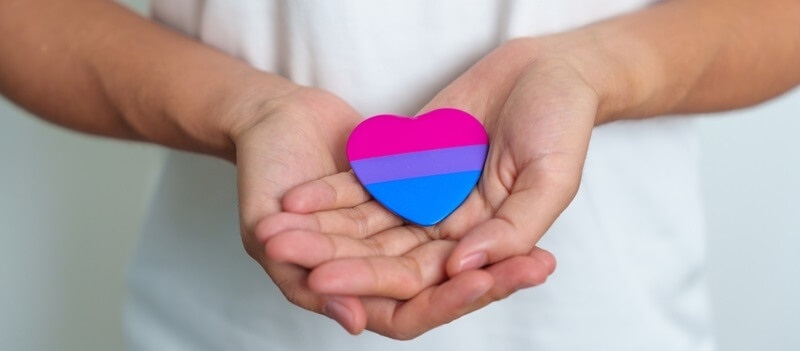Learn the 10 Essential Steps to Heal After a Queer Breakup

Breakups are universally challenging, affecting individuals regardless of their background. However, the experience can be particularly taxing for queer individuals, who often face unique societal and personal dynamics. Unlike their heterosexual counterparts, queer people may have spent significant parts of their lives concealing their true identities or facing discrimination, which can complicate their romantic relationships and the aftermath of a breakup.
The emotional landscape following a breakup can be tumultuous, necessitating a personalized approach to recovery that emphasizes self-care and emotional well-being. Here are five crucial steps to navigate the healing process.
Step 1: Open Up and Share Your Feelings
After a breakup, it can be incredibly beneficial to talk about your feelings. Sharing your emotions and thoughts with trusted friends or family members can help clarify your mind and provide a sense of relief. Verbalizing the breakup details allows you to understand and process what has happened.
This dialogue can prevent feelings of isolation and confusion, making it easier to cope with the emotional upheaval. Its often surprising how much lighter you can feel after expressing your thoughts and having someone listen and offer support.
Step 2: Allow Yourself the Space to Grieve
One of the first and most essential steps in healing from a breakup is allowing yourself to grieve. Grieving is a natural and necessary part of emotional recovery. It's vital to understand that crying is a healthy way to process your feelings.
Crying helps release stress and provides an emotional outlet, facilitating relief and emotional cleansing. It's a natural mechanism for dealing with pain and should not be suppressed. Letting yourself cry can be a crucial part of coming to terms with the end of a relationship and beginning to heal.
Step 3: Reflect on the Relationship Dynamics
Taking time to reflect on the relationship can be a valuable exercise. Making a list of what didnt work in the relationship can help you understand why it ended. This process involves identifying the negative aspects, which can reduce the tendency to idealize the past and feel nostalgic.
By focusing on the reasons for the breakup, you can gain clarity and perspective, which makes it easier to move forward. This reflection is not about blaming yourself or your ex-partner but rather about gaining insights to help you grow and avoid similar issues in future relationships. Understanding these dynamics is also crucial for promoting LGBTQ+ mental health, as it helps in addressing specific challenges faced within the community.
Step 4: Engage in Physical Activities to Boost Your Mood
Physical activity is a powerful tool for managing stress and improving mood after a breakup. Regular exercise, whether going to the gym, swimming, running, or even walking, can significantly impact your emotional well-being.
Exercise releases endorphins, chemicals in the brain that act as natural painkillers and mood elevators. These endorphins can help you feel happier and more relaxed. Additionally, physical activity can distract from emotional pain and provide a sense of accomplishment and progress.
Step 5: Embrace Social Outings to Lift Your Spirits
One of the most effective ways to cope with a breakup is to embrace social outings. Going out for a night on the town can be a wonderful distraction from the emotional pain of a breakup. Spending time with friends in a lively environment, dancing, and enjoying yourself can significantly elevate your mood. Socializing allows you to shift your focus away from the breakup and immerse yourself in the present moment.
The joy and laughter shared with friends can help you see beyond the immediate pain and appreciate lifes pleasures again. Whether its a night at a club, a dinner party, or just a casual evening at a local bar, engaging in social activities can be a therapeutic way to mend your heart.
Step 6: Carefully Consider Casual Relationships Post-Breakup
The adage to get over someone, you have to get under someone suggests that casual relationships can quickly fix post-breakup heartache. While this might work for some, its essential to carefully consider your comfort and readiness before jumping into a new relationship or casual encounter.
Such decisions should be based on your emotional state and personal values. For some, casual relationships can offer a sense of liberation and distraction. For others, they may complicate emotions and prolong the healing process. Reflect on what feels suitable for you and ensure that your decisions genuinely benefit your emotional well-being.
Step 7: Discover or Revisit Interests and Hobbies
A breakup often leaves you with the extra time you previously spent with your partner. This newfound free time can be an opportunity to discover new interests or revisit old hobbies. Engaging in activities such as taking art classes, joining a sports league, or learning a new language can be incredibly fulfilling.
These activities not only provide a productive way to spend your time but also help build your self-esteem and meet new people. Immersing yourself in new pursuits can bring joy and a sense of purpose, aiding in the healing process. Exploring these interests can also create new opportunities for connection, especially within supportive communities that embrace same-sex marriage.
Step 8: Stay Occupied with Productive Activities
One crucial strategy for overcoming a breakup is keeping yourself occupied. The busier you are, the less time youll spend meditating on your past relationship. Engage in productive activities that interest you and contribute to your personal growth.
This could involve pursuing a new hobby, volunteering, or learning a new skill. Staying busy not only distracts you from the pain but also helps you healthily process your feelings. Its vital to balance staying active and allowing yourself time to rest and reflect.
Step 9: Set Clear and Achievable Future Goals
A breakup often leaves a void that can be effectively filled by setting new personal goals. Making a list of future goals and outlining the steps to achieve them can provide direction and purpose during a time of emotional turbulence. These goals can be related to various aspects of your life, such as career aspirations, personal development, or travel plans.
Focusing on these objectives diverts your energy from dwelling on the past to building a promising future. Detailed planning and goal-setting can give you a sense of control and optimism, helping you move forward confidently and clearly.
Step 10: Rekindle and Nurture Old Friendships

After a breakup, realizing that some friendships may have taken a backseat is common. Rekindling old friendships can be incredibly rewarding and provide much-needed support. Reach out to friends youve lost touch with and arrange a meet-up.
Reconnecting with old friends can renew positive relationships and remind you of the support network you have outside of your romantic relationship. These friends can offer different perspectives, share in your healing journey, and reintroduce you to social circles you may have drifted from. Your effort to revitalize these friendships can yield a strong sense of community and belonging.
You may also like: LGBTQ+ Dating - Tips for Building Authentic Connections
Conclusion:
Navigating through a breakup is a deeply personal journey that requires self-care and discovering what healing methods work best for you. By embracing social outings, considering your readiness for new relationships, reconnecting with old friends, setting future goals, and keeping yourself occupied, you create a holistic approach to recovery.
Each step is designed to help you heal and grow, ultimately leading you to a place of renewed strength and optimism. Embrace these new beginnings and allow yourself to thrive beyond the breakup, focusing on personal growth and the promise of a brighter future.























